Trying out a new concept for collaborative blogging: here are a few pages of the “Thousand Nights and One Night” (cleaned-up, PG-13), headed by a quatrain from Omar Khayyam, in “Intermediate DJS,” meaning “with mistakes.” The next step is for YOU to add the next bit of story, and then for someone to pick up after that, and to keep going forever. Please write in any variant of Gregg that suits you. Of course, you may also contribute corrections or transcriptions, for which most of us will be grateful, I am sure!
Feel free to make up your own story line or to crib (being cognizant of copyrights, of course: gutenberg.org has several free versions, e.g., http://www.gutenberg.org/ebooks/3435). Maintain a bit of continuity and spirit with the prior bits, and stay PG-13.
It’s OK for multiple contributions to come in parallel, meaning that the story will branch into multiple lines.
The point is to have fun and to practice reading all variants and to practice writing in your favored variant for topics other than business letters!

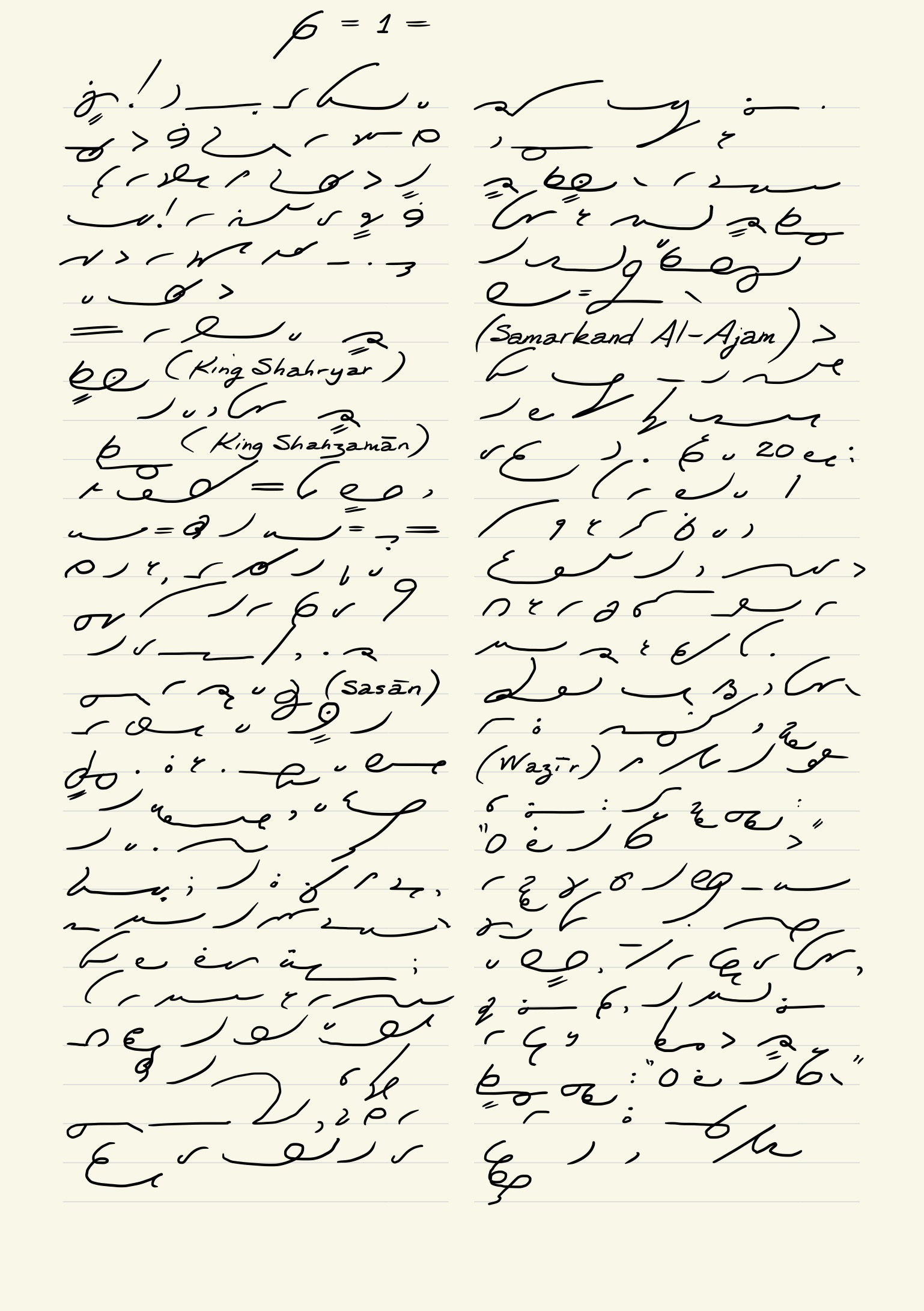
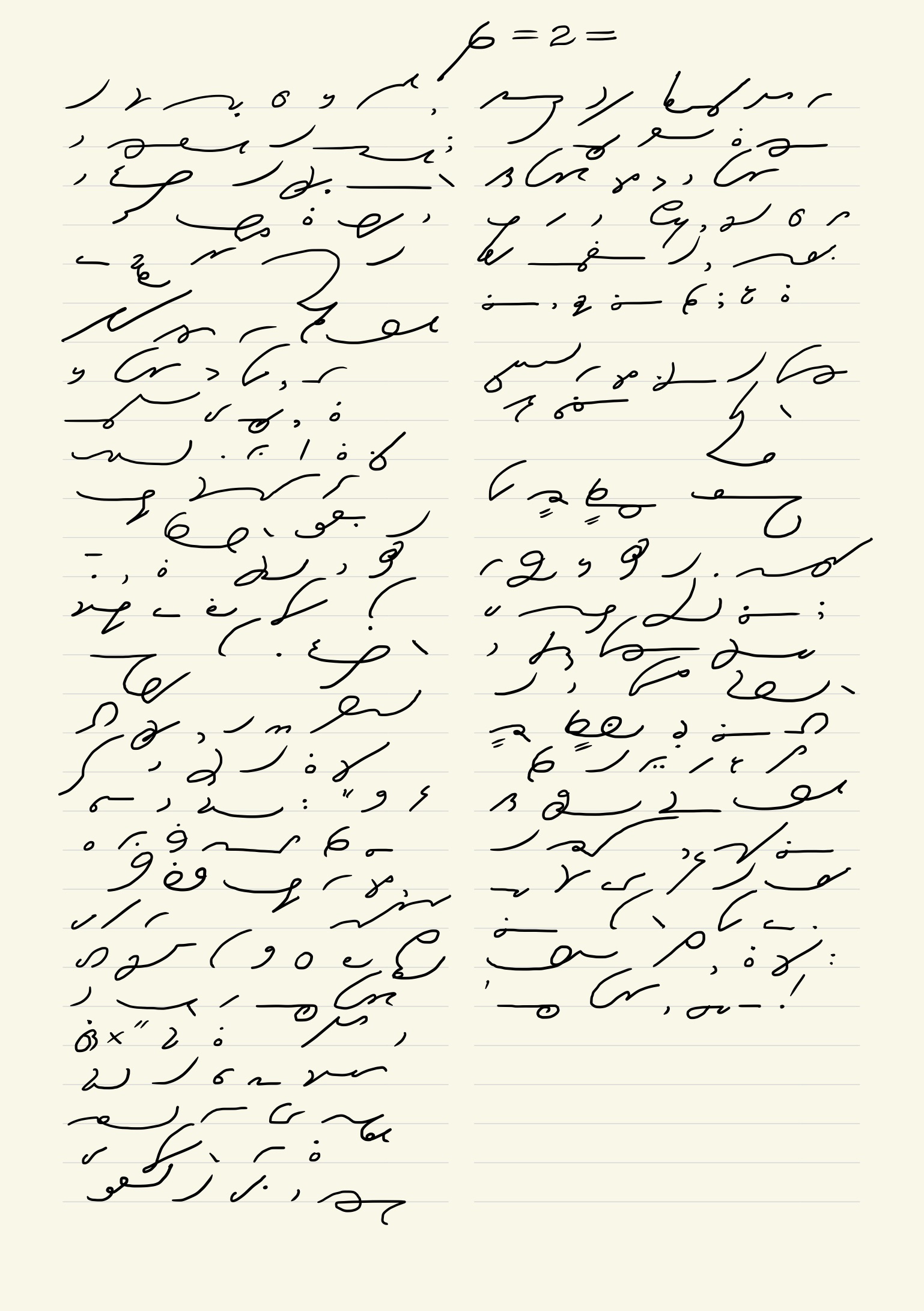
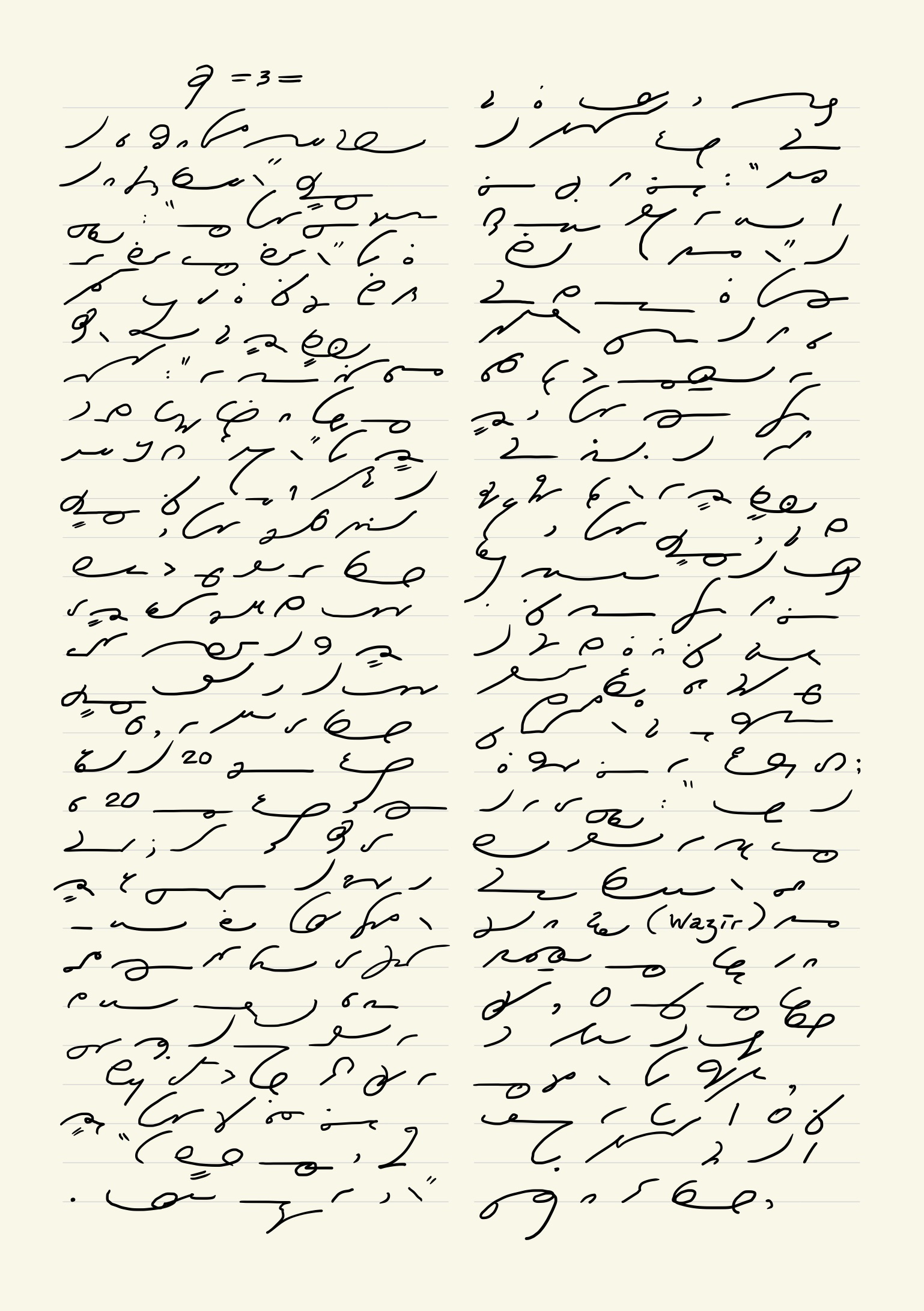
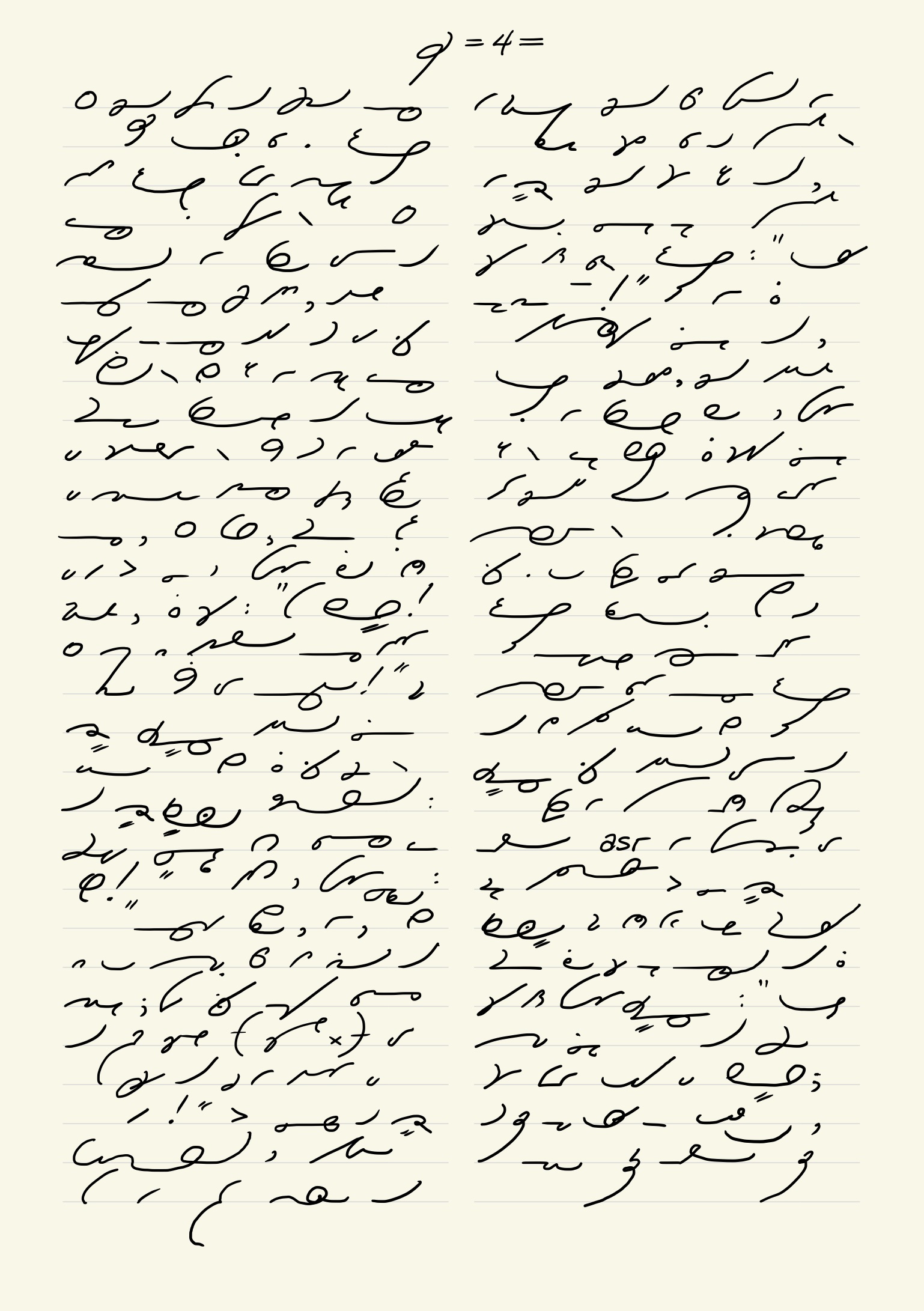
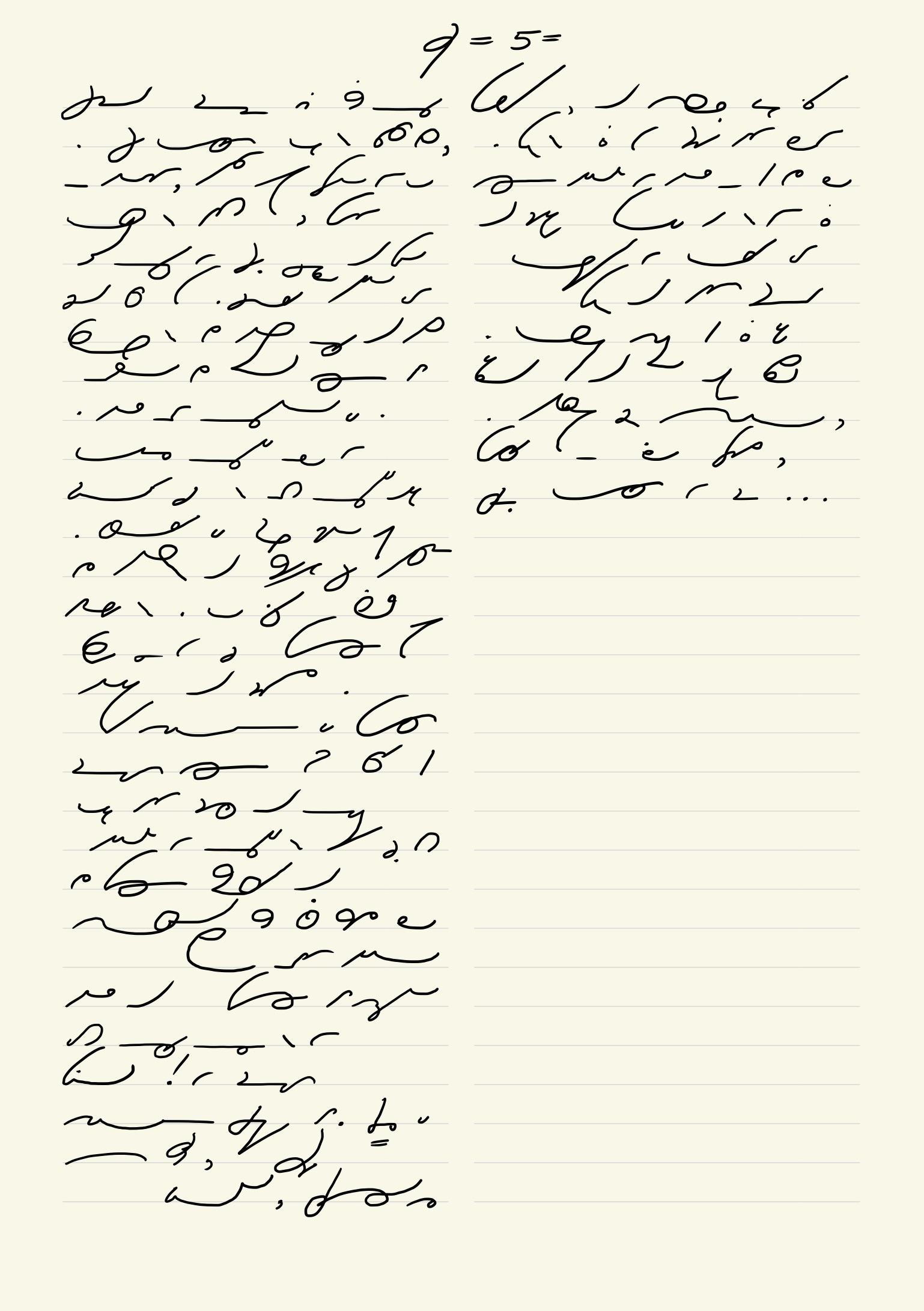
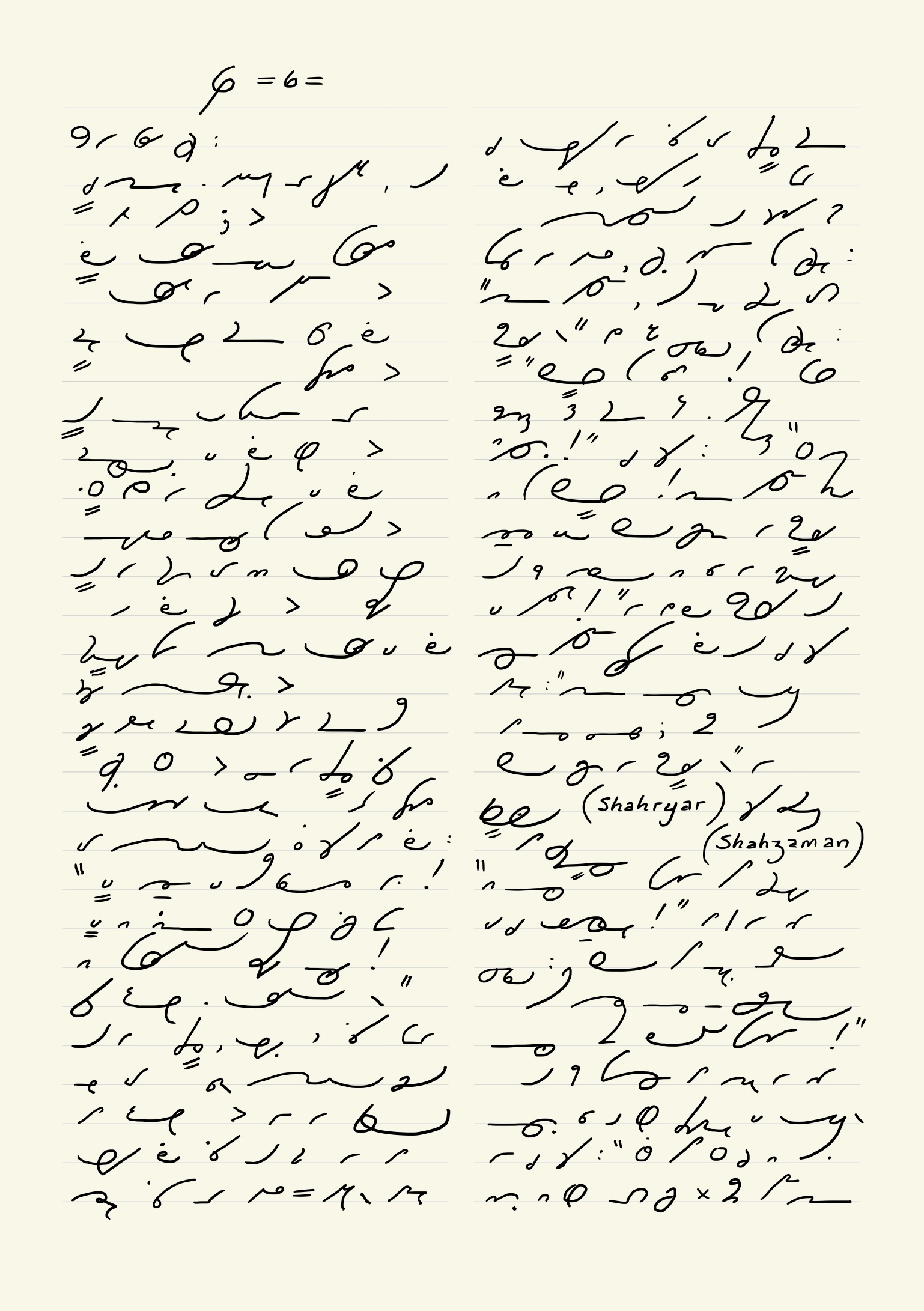
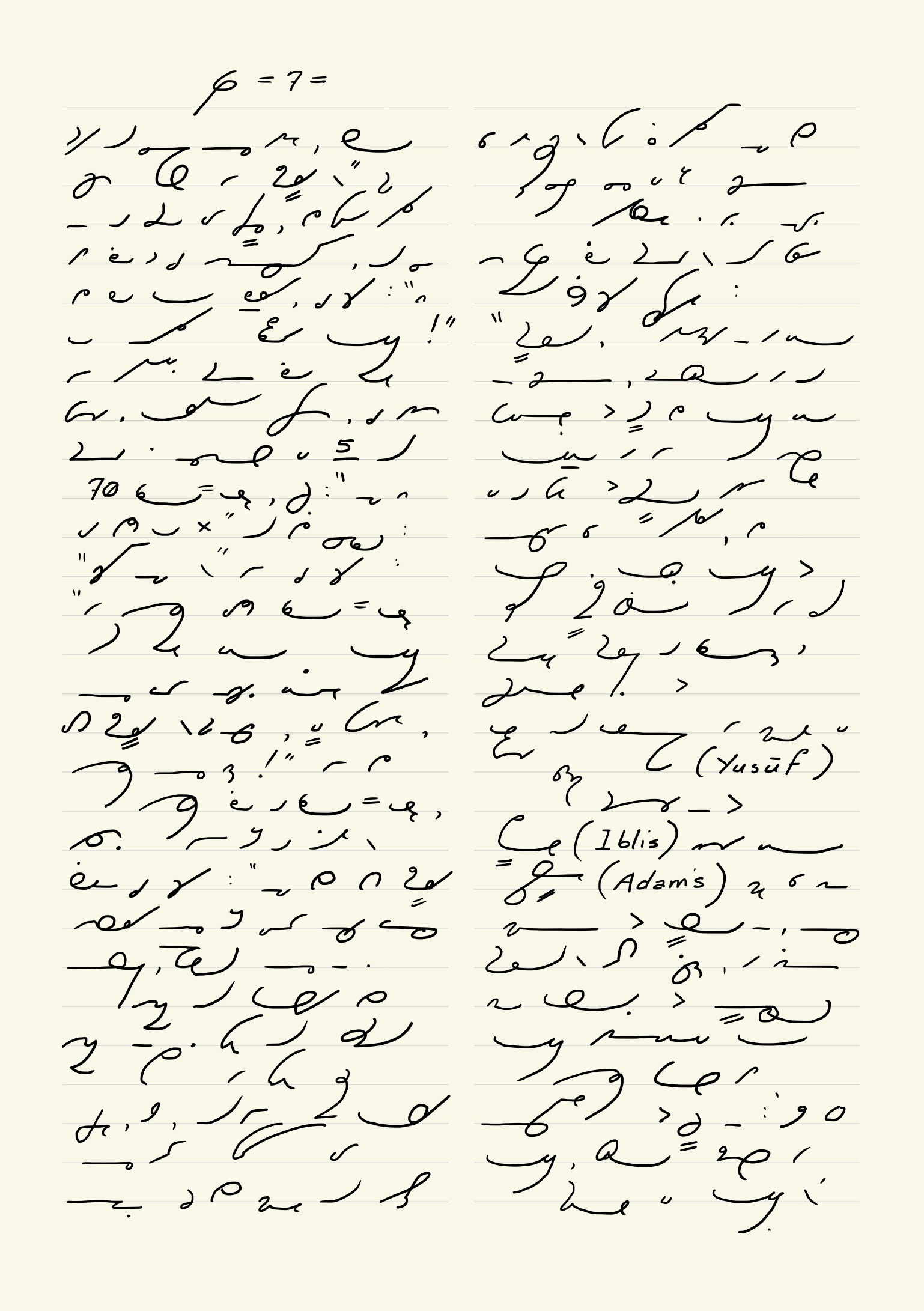
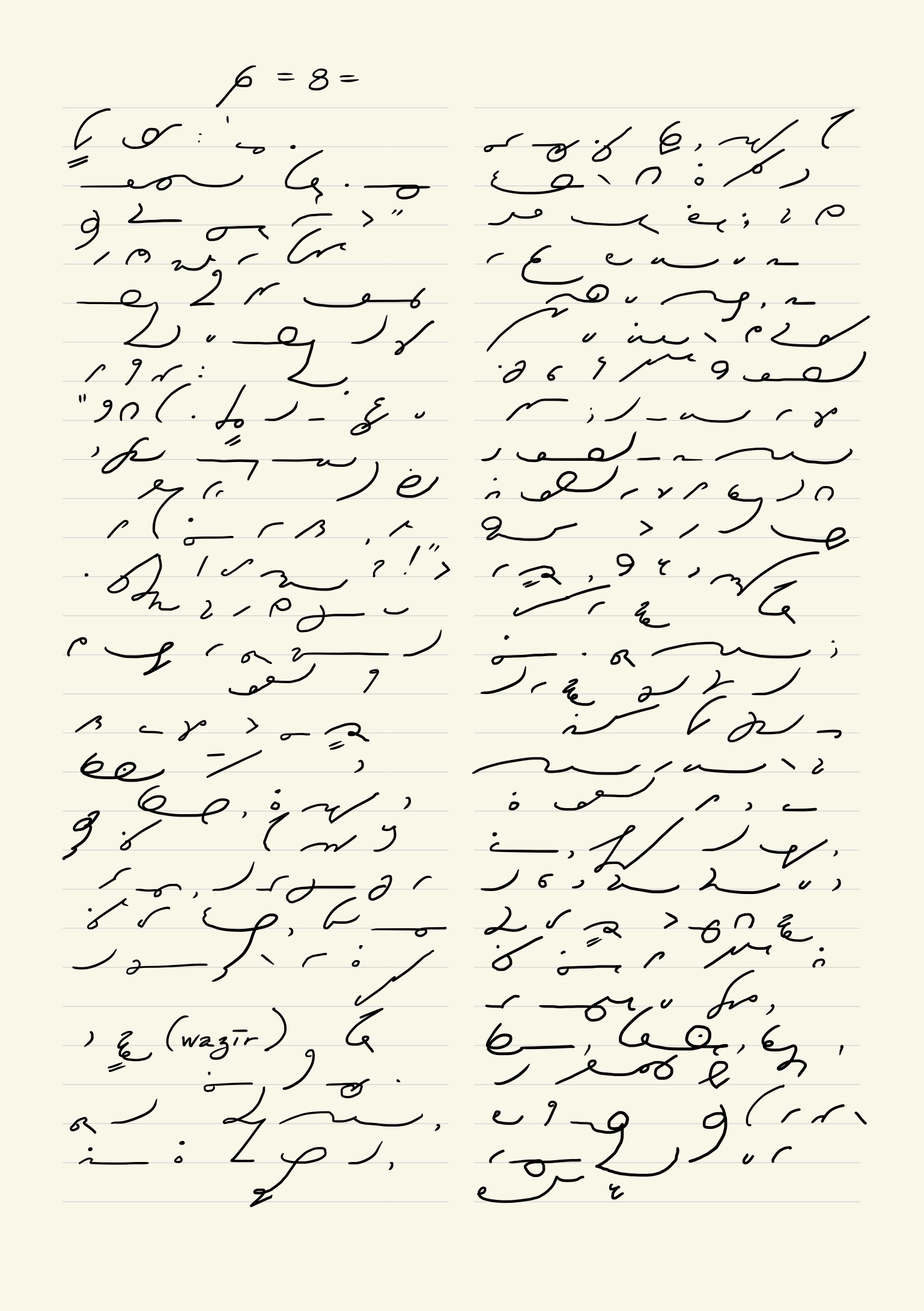

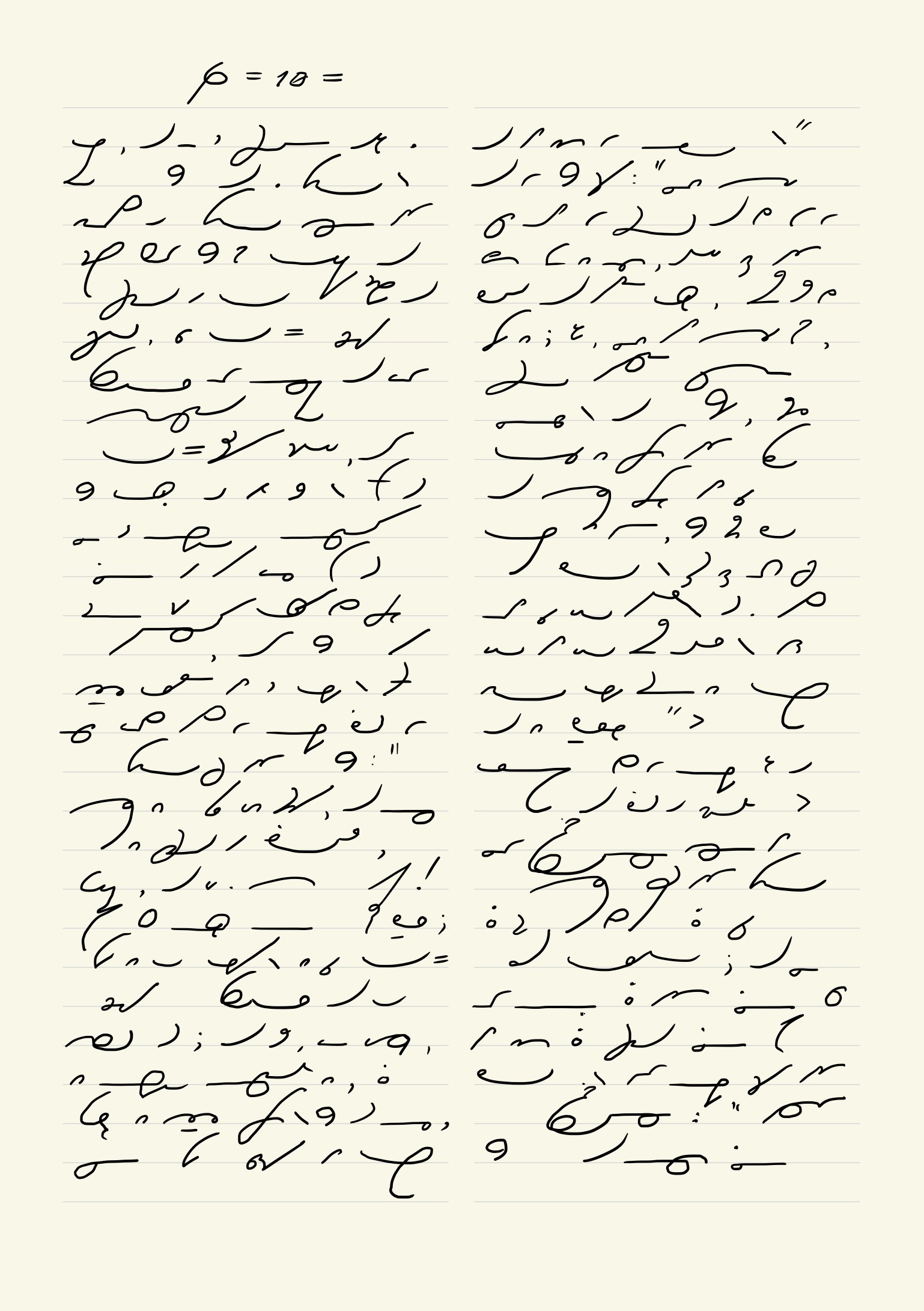
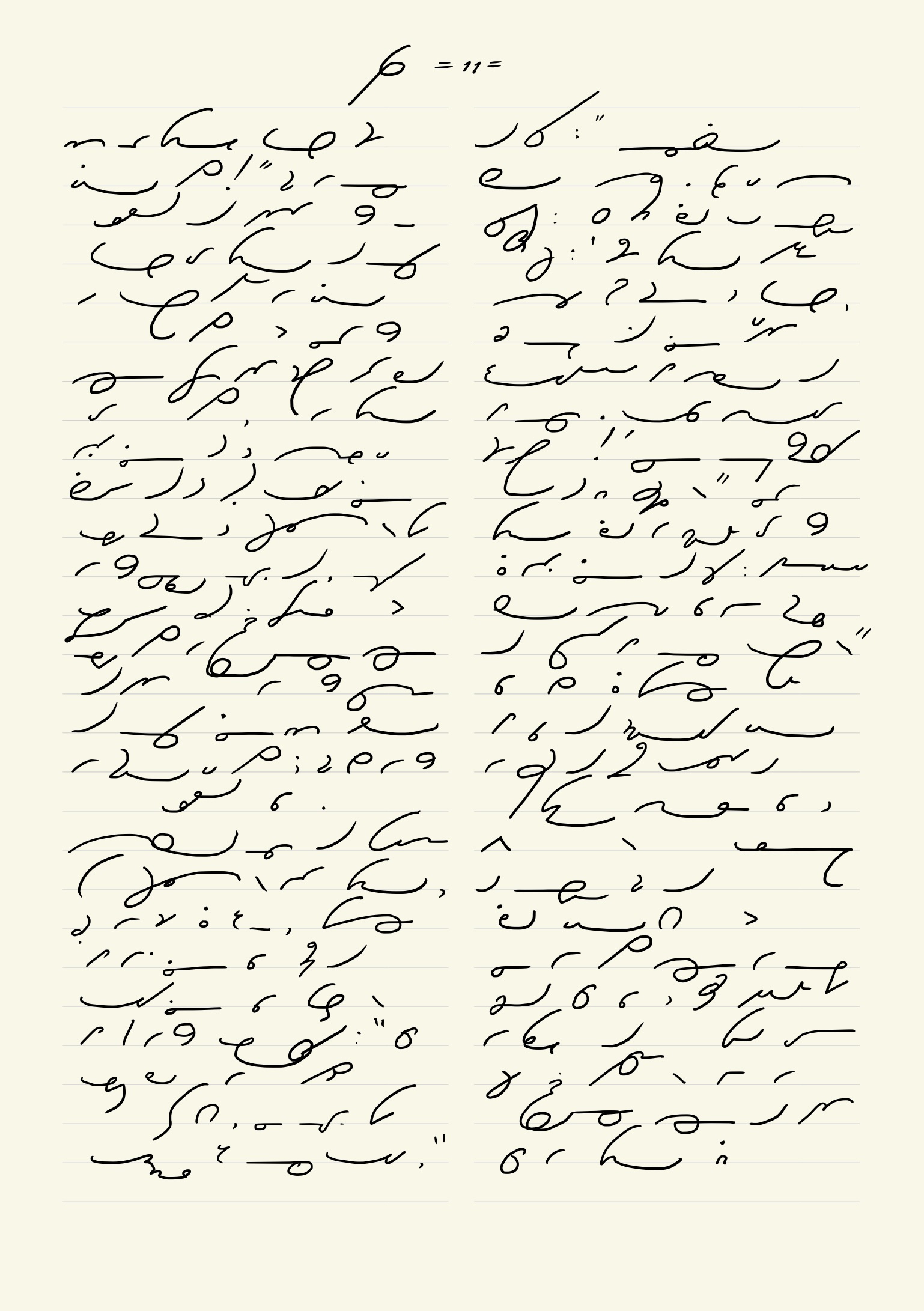
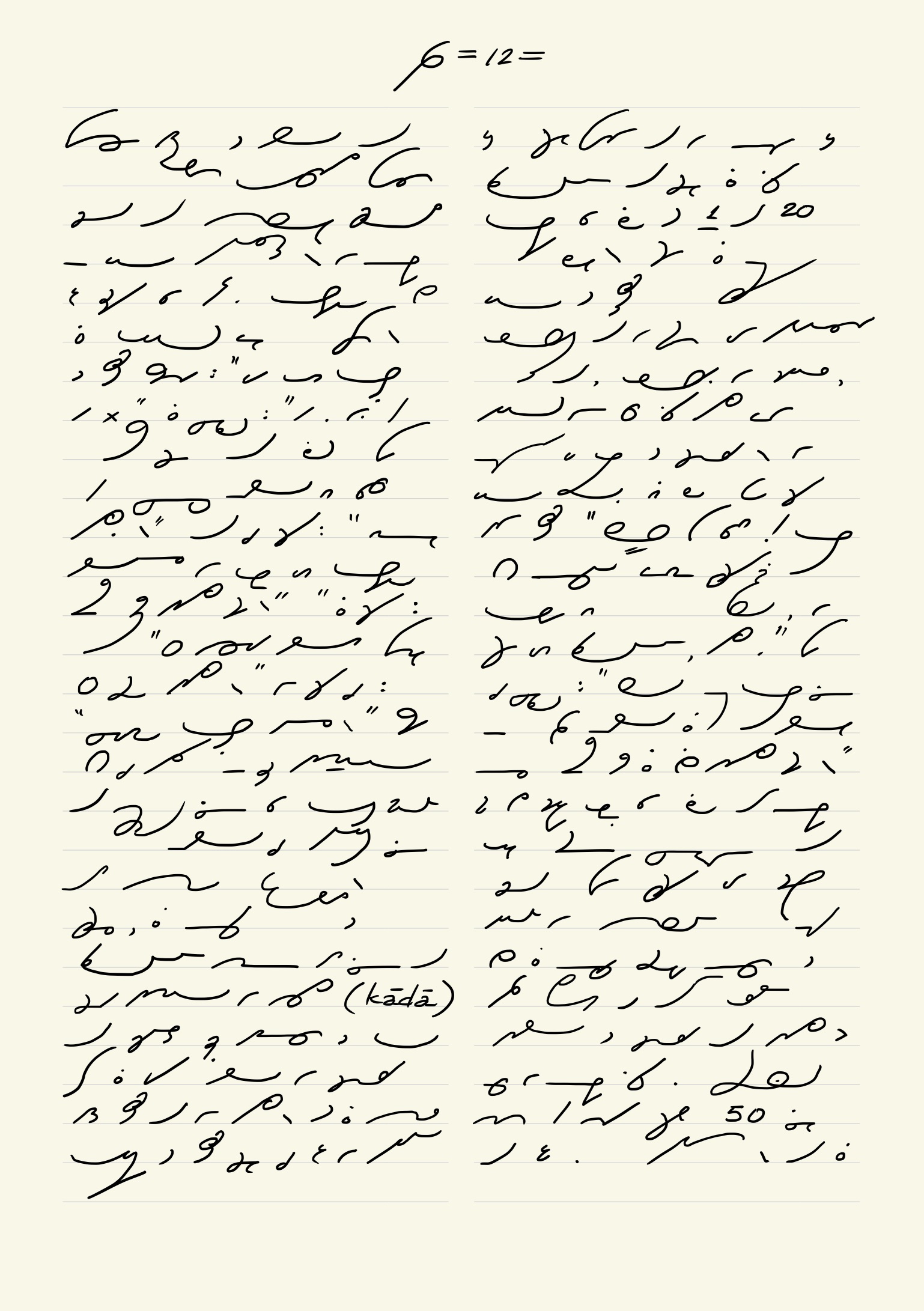

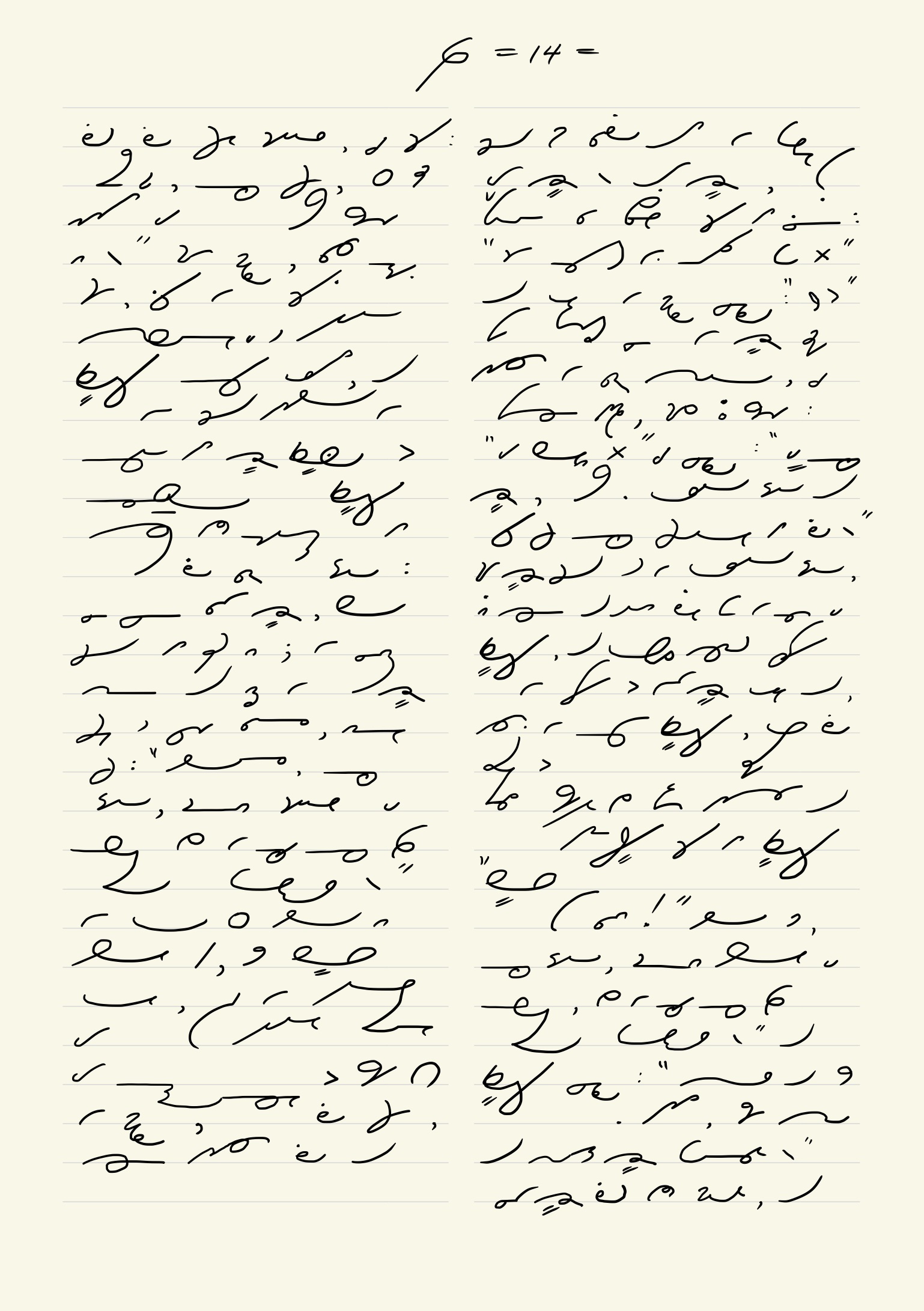
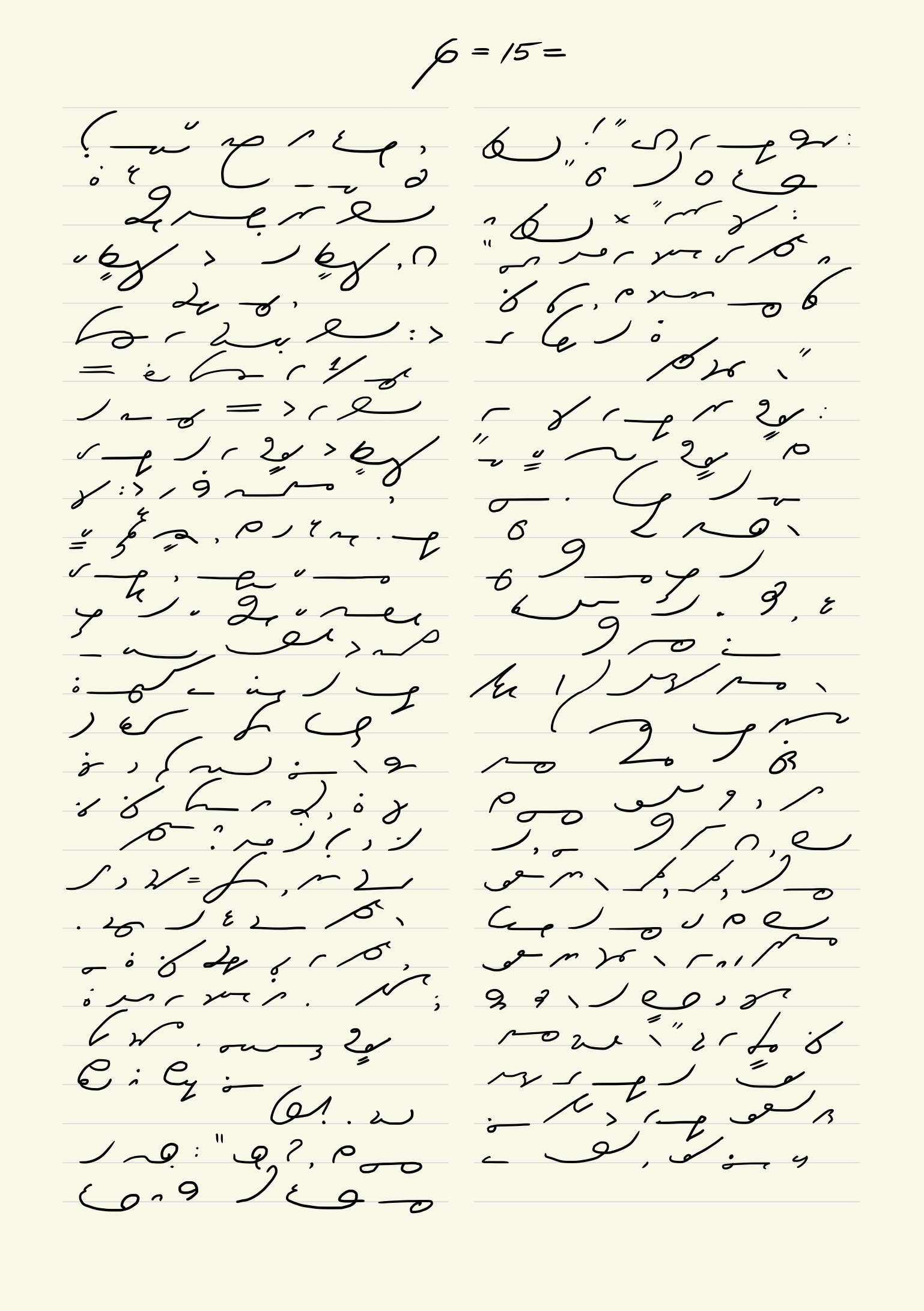
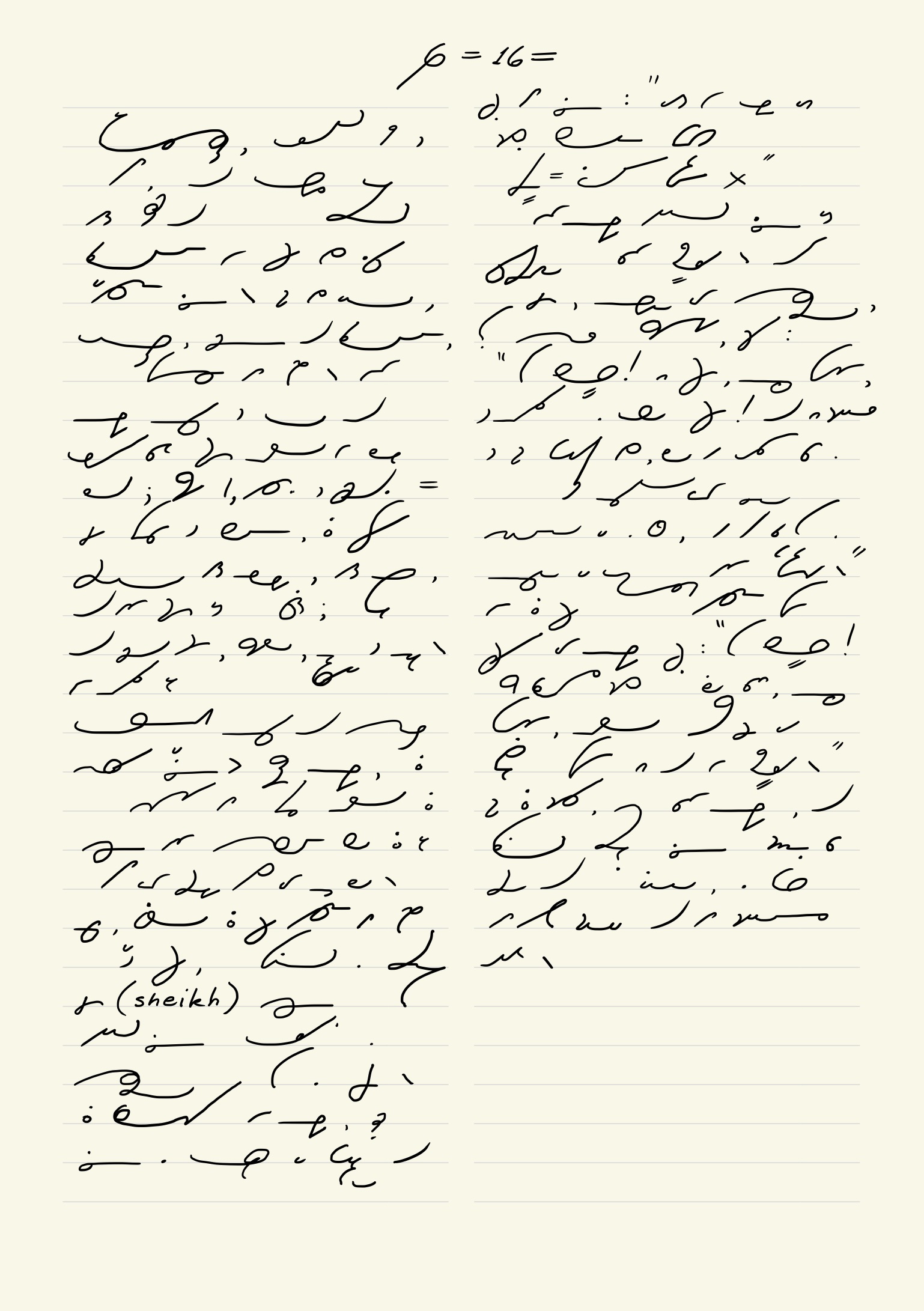
Are you using the Mardrus & Mathers translation?
Yes, & modifying it as necessary. I've had it in paper for ages, plus I have acquired over the years a few bits of the McNaughten Calcutta folios that are the sources for Mardrus & Mathers and learned enough Arabic to cross-validate here and there.
What a fun idea! I must contemplate (and prioritize my time, alas). But I am intrigued. 😀
I'm hoping to make another installment this weekend. My last one was written on A4 paper that got a little clipped, so I'm learning about how to post better and avoid such noise. I also noticed going over my DJS books that the shorthand in the plates uses a LOT more horizontal spacing than I have been, so I'm planning to correct that, too. But, in the spirit of fearless 'learning by doing,' I'll be carrying on 🙂
Here is page four
https://www.dropbox.com/s/txwli4m42rfh4oa/1000AndOne_pg_004.PDF
Any and all comments are welcome.
(btw, I tried to upload to "media" a jpg version of this to the site, but it would not let me, reasons unknown)
Here is a link to the entire folder of all pages so far
https://www.dropbox.com/sh/pjhli0grkqloa46/AABOr3DCQzjdZ7xNfD1cvg1Ta
I uploaded an image of Page 4 in the main article. It's easier that way than in the comments.
By the way, your writing is turning out much nicer and clearer! I have some small comments on some outlines that I’ll post later, but it certainly reads very clearly.
Thanks very much. It’s slowly but surely feeling a little more natural every session. I know just keeping at it is the secret of no secret 🙂
btw, remember when I started out, I wasn’t conscious about the writing line. I knew there was a reason but couldn’t recall exactly what. Then I stumbled across it again: in paragraph 93 of my original DJS functional-method book, it clearly says you don’t need to worry about it. BUT, turn the page, and it says that IF you were to pay attention then here are the rules 🙂 I’m sure I missed that bit in my first pass. I guess it’s another case of over-aggressive over-simplification in DJS to promote popularity amidst the decline of shorthand.
I tried "New" and "media" in the upper left of the web page. When I tried to upload a PDF, it gave me a security exception. When I try to upload a JPG, it said I wasn't authorized. Somehow, I've lost the ability to upload on my own 🙁
You cannot upload PDFs, but you can download images, but only in the original post, not in the comments.
Excellent. Got that figured out and replaced links with uploads and added a page 5.
Added pages 6 through 11, soliciting comments and corrections 🙂
Here are some corrections for pages 3 and 4:
Page 3:
1. left side, line 2: the s in "cheeks" should be a right s.
2. left side, line 3: "stricken" does not have an e; "heart" reads "hard" (the t is missing).
3. left side, line 5: the f in "wife" should be on the line, not below; "Shahryar" can be written as one outline.
4. left side, line 6: "with me" can be phrased (with a little jog between the over th and the m).
5. left side, line 9: "to do so" can be phrased (omit the first oo-hook); "went" starts with an oo-hook (the underscore is only used in the middle of the word)
6. left side, line 10: the o-hook in "alone" should be turned to the right because it comes before an n; the period mark is not written when the end of paragraph mark is used.
7. left side, line 11: "on to the" can be phrased.
8. left side, line 12: "garden": g-a-rd-n.
9. left side, line 13: "gawked"?; "of the" should be phrased
10. left side, line 14: "opened" should have an e between p and nd (the pend- blend does not exist in DJS, S90, and Centennial); it's easier to write "twenty" in numeric form, but if you want it in shorthand: t-underscored e-nt blend-e.
11. left side, line 15: both s'es in "slaves" are reversed: left s-l-a-v-right s; "from it" can be phrased.
12. left side, line 16: "and the" can be phrased.
13. left side, line 17: "among them" can be phrased; the initial oo-hook in "walked" is not clear.
14. left side, line 19: "fountain": f-a-oo hook-n-ten blend.
15. left side, line 21: o-hook should be turned to the side in "dawn"; "at this" should be phrased.
16. left side, line 25: "slip" should be written with the left s (check your s joining rules!); "this is" should be phrased.
17. left side, line 26: "to me" should be written with the tem blend.
18. right side, line 1: "to drink" can be phrased by joining both outlines.
19. right side, line 2: "meanwhile" is written with the underscored broken circle.
20. right side, line 3: "each other" is written with the oo-hook (not the o-hook).
21. right side, line 5: "color" is written with the oo-hook (not the o-hook).
22. right side, line 7: the o-hook of "long" is turned to the side; the t of "dealt" is missing (it reads "dealed").
23. right side, line 8: "in his" should be phrased (n-left s).
24. right side, line 12: "wazir" can be written much easier as oo-hook-o hook-left s-e-r.
25. right side, line 13: the e of the pre- syllable of "presence" is missing.
26. right side, line 14: there is no oo-hook in "departure."
27. right side, line 15: the f in "afterwards" is too short.
28. right side, line 17: "for you", "I gave you", and "at the" should be phrased.
29: right side, line 19: "upon the":p-n-over th ("upon" is a brief form); there is no a in "carpets."
30. right side, line 22: "tries" or "thrice" (as in 3 times)? If thrice, then it should be an under th instead of a t.
31. right side, line 24:"as for the" should be phrased.
32. right side, line 25: "to my" should be phrased: tem blend-broken circle.
I see more or less the same mistakes on Page 4, but in addition, the e in "giving" (right side, line 6) should be written inside the curve (not outside).
Lastly, in general, if a personal pronoun is followed by a verb, it's much easier to phrase and write them together when it is not awkward to make the joining (for example, "I pray", "I killed", "I gave you", etc.).
I am grateful for such careful reading. I’ll be rewriting those pages forthwith!
Pages 3 and 4 redone; new pages added.
This is looking so much nicer! Here are some things to remember:
1. When an outline (word or phrase) starts with a vowel, the vowel does not determine the position of the outline on the line of writing: it is the first consonant that dictates placement. So for example, the phrase "we have" does not start on the line, but on top, with the bottom of the v resting on the line (and not the oo-hook-e).
2. In phrases formed by to + verb, if the verb starts with a left s or a downstroke (ch, j, sh, p, v, f, or b), the to is replaced with a t. So for example, on page 15, "to sleep" can be phrased as t-left s-l-e-p.
3. The word "king" is tricky to write correctly, but it can be done much easier if you think of writing "kin", and slant the n downwards to write the ng. The beginning of the n and the end of the k do not need to be connected as you're currently doing, and it's much harder to write it at speed that way. Notice the similarities in both outlines:
Notice that the ng in "king" is the same n of "kin", but slanted downwards.
got it 🙂 I will make the according changes!
RE nicer: I can definitely feel the "knack" developing slowly, slowly. There are things I no longer need to think about like "and" and "of the." As I pound through the material, bits of it leech into the subconscious, as it were, by sheer repetition.
Indeed, I understand.
By the way, the a in "Sharhrazad" (and in “Shahryar”) is written inside the curve formed by the joining of the sh to the r (and not outside): technically, straight downstrokes (sh, ch, j) and also p and b do not form an angle with r or l, so the circle goes inside.
That's good clarity ("… technically, straight downstrokes … do not form an angle with r or l …"). Now I know the rule explaining why the a in "bag" is written outside but the a in "ball" is written inside.
Correct. It is also the same rule that explains why the circle goes inside when you have a straight upward stroke (t, d, ted blend) followed by k or g (no angle is formed).
"deal" (outside) versus "dig" (inside); "decorate" versus "direct." It's all beginning to make sense.
This stresses the importance of copying the reading and writing selections of the introductory shorthand books in one's best penmanship so that the brain gets used to the way the characters are connected (even if the material is boring business letters). Afterwards, a lot of these things become second nature and you won't be guessing as to how the outlines should look like.
100% agree, a bit in hindsight. By way of excuses, my DJS books are pretty soft on theory, assuming the student will adduce the rules by osmosis. I'm the type who needs theory to go along with my examples, so I got a bit behind. I found some Anni material that explains the rules clearly, and your reinforcements and clarifications are invaluable in the context of my evolving writing!
Corrected many mistakes (and undoubtedly made new ones). No new material.
Very lovely, Brian!